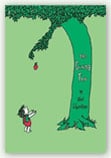Brazil to Conduct a Rainforest Tree Census
The Brazilian government has announced its plans to launch a massive census on trees in the Amazon rainforests.
Rainforest Maker understands the process is expected to take at least four years. The primary goal is to give the government at least a broad idea of the quantity, quality and condition of the forest cover, according to reports from the AFP.
The ultimate purpose is to give officials a better sense of what is there, so they can take steps to more effectively protect it. Brazilian leaders have set a goal of reducing deforestation rates in the country by 80 percent as of 2020.
Success is going to rely heavily on the government knowing which areas are the most threatened and by what before they can gauge the type of action to take.
This will prove especially critical in the years to come. As it now stands, we know that rainforests used to cover about 15 percent of earth’s land surfaces. Now, they cover only about 6 percent - a figure that is rapidly declining. By some estimates, we are losing 1.5 acres every single SECOND.
That amounts to roughly 140 animal, plant and insect species that we are losing – forever – each and every day, solely as a result of deforestation of the rainforests. In these species are undoubtedly as-yet undiscovered cures for life-threatening diseases and infections. Consider that while 25 percent of our medicine is derived ingredients culled from the rainforest, we’ve only tested about 1 percent of those tropical plant and tree species.
Yet at the rate we are going, some scientists have posited that half of the Amazon rainforest could be completely gone by 2050. At that point, the rainforests would likely never recover. Other scientists have had an even grimmer view, speculating we could see the total destruction of the rainforests within 40 years.
In Brazil, European colonists effectively wiped out some 90 indigenous tribes just since the beginning of the 20th Century. With their passing, so too have we lost centuries of knowledge regarding the medicinal value and other properties of these plants and animals.
We know that the Amazon Rainforest covers over 1 billion acres, and covers areas in Brazil, Colombia, Venezuela, Peru and Ecuador. If it were a single country, it would be one of the largest in the world.
So while Brazil’s count won’t give us an accurate picture of the entire Amazonian rainforest, it should certainly help to contribute to the knowledge we do have – which is still sparse. Brazil’s section of the forest covers 3.3 million square meters (half the worlds’ remaining tropical rainforest).
Crews won’t be able to count every single tree, but they intend to log about 20,000 points every 20 kilometers. Teams will be working to log the number, diameter, height and species of trees at those points. They will also be testing the types of soil, the biomass carbon stocks and will even be documenting interactions with local people at each location.
It will be the most comprehensive inventory done in the country since the early 1980s.

